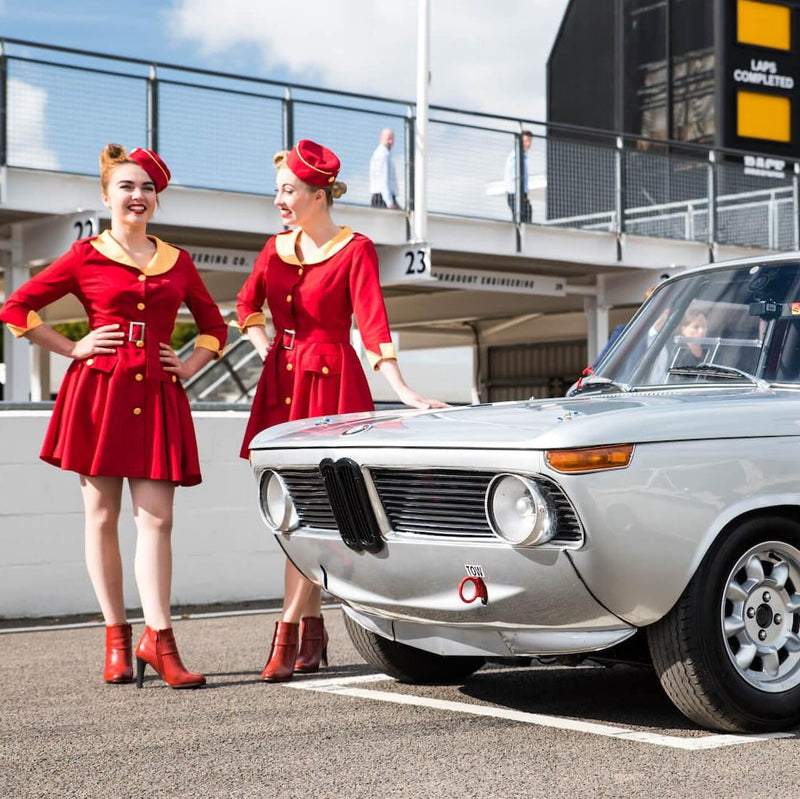Many vehicle designers are into cars as much as the rest of us, so it makes sense they’d be driving, photographing, and experiencing classics as much as possible. Marc Tran’s photos accompany this interview, so you’re able to very clearly see which details he was entranced by.
Michael Banovsky: What I thought was interesting was when you’d mentioned initially how at the Blenheim Palace, it was a contrast between seeing them in a natural context—on rally stages—and instead of that, they’re at a palace.
Marc Tran: It was really…There were all these supercars displayed. So, a lot of…many supercars there from the ’80s and current supercars like Koenigsegg, Paganis, old McLaren F1s, the XJ220. Quite glamorous cars were displayed there.
Alongside these ones, there was this line up of Group B cars. I was there last year, but it wasn’t the same. This year, there was a proper lineup of great Group B cars. The fact that they were treated as the kind of car that could be…that people will vote for, as a concours, was really interesting. All clean, neat. No damage, no scratches, no mud, no snow on them.
MB: Even with their nice forms they’re disposable cars, right? They’ve got box flares and bolt on bits and there were accidents. They lived a really rough life.
MT: Yeah. Exactly. Repaired. They are very rogue cars, their shapes. All the intakes, they are here for a purpose. They are functional cars.
It’s more like an approach of engineering, and less the approach of a stylist or designer on it. It’s like in Formula One, I guess that they don’t have “designers”...they’ve got technical designers or design engineers, aero designers, who are making parts for a purpose. They’re not made to be beautiful. The approach, I think, on when this car was designed should be the same. That, if you add this wide body and put a hole in the hood, that’s the reason for that.
MB: Do you think the growing popularity of Group B, as cars that should be, that can be, collected and shown at concours and exhibitions?
MT: I think, yeah. I’m working in an automotive design studio. We always look back to the good ones. There’s always good and bad references. Some of them, like Jaguars, haven’t been really accepted. We are keeping in mind only the best ones. For the quattro, from Audi, it’s definitely one of their most important cars for the brand. That’s why they did two or three concept cars called quattro concepts, three or four years ago.
They have honestly looked back at these car, this Audi quattro S1, as an inspiration. It’s great. When you get the legacy of a company, you should use it to your advantage. Compared to a new brand, like a Faraday Future or Tesla, which hasn’t gotten any history or background. The manufactures can do as much as they can from the past. Competition or racing cars were known, to an extent, as the will of the companies, the manufacturers—they were racing. It’s definitely a great source of inspiration.
MB: Do you think their history of racing can even touch people who are new to cars?
MT: You see all these cars displayed. Even if they are not all used for competition...they’re still used for racing, and you’d see them in these events. It’s giving them a second life. They’re getting value from this. If the cars get damaged or scratched, it will give even more story and value to the car. You see some amazing Aston Martin DB5s, priceless classics properly raced…It’s amazing to see them like that. I saw some, last year, damaged and crashed.
The year after, they’re going to come back and be repaired and race again. I think people like stories. If you are interested by stories of the cars, it’s even more…You want to know more about the story. About who was racing it. “Which race did they win with this one?”
MB: I’ve often thought that if you took one of these old racing cars and—if you had been able to keep all of the tires that the car wore in testing, and in races, and all of the bodywork that had been replaced and modified, you’d probably have almost an entire Concours with a single vehicle. You’d have a few dozen bumpers. Especially Formula One cars. Those things are rebuilt constantly.
MT: The amount of parts which are changed and updated is crazy.
MB: With these Group B cars, it was also the first era where manufacturers were spending a lot, a proper sum of cash on developing rally machines. A Renault 5 (Le Car)-based Renault 5 Turbo that entered day one was a fundamentally different car than the one that left at the end of it. Do you ever look for that progression when you see these cars? Can you see that design progression in the cars?
MT: If you look at the details, yeah, you can tell. If you are not really familiar with the cars…at a first glance you won’t be able to tell. Sometimes you don’t know the car. There was some time for me that I saw this detail, over there… It depends what knowledge you’ve got on the car.
Thanks to Marc for sharing his thoughts and photography to accompany his look at the Group B era of rallying, and why it was so unique in history. You can follow his travels on Instagram, and his latest portfolio work at Behance.



















































